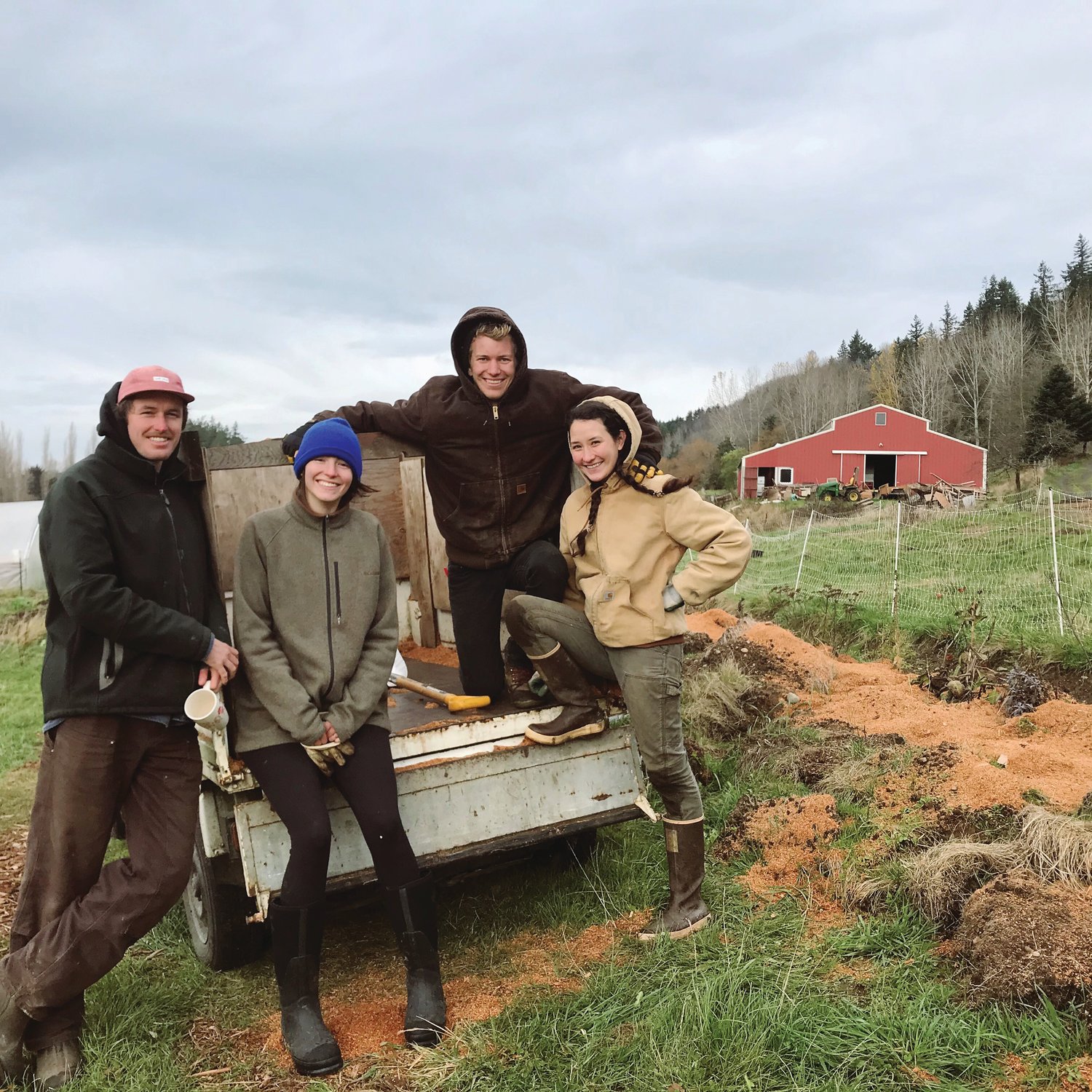Have you had one of those conversations with your friends where you lament the complexities of modernity and together suspend reality in creating a sort of sun-splattered utopia of linen and …
This item is available in full to subscribers.
We have recently launched a new and improved website. To continue reading, you will need to either log into your subscriber account, or purchase a new subscription.
If you had an active account on our previous website, then you have an account here. Simply reset your password to regain access to your account.
If you did not have an account on our previous website, but are a current print subscriber, click here to set up your website account.
Otherwise, click here to view your options for subscribing.
* Having trouble? Call our circulation department at 360-385-2900, or email our support.
Please log in to continue |
|

Have you had one of those conversations with your friends where you lament the complexities of modernity and together suspend reality in creating a sort of sun-splattered utopia of linen and hand-grown food, cheeks charmingly pink from an honest day’s work, community at the core?
Well, it’s real. Some version, anyway.
And the creators write about it quarterly, each solstice and equinox, in a zine from Port Townsend’s own publisher, Winter Texts.
The Beaver Valley Radish came into being after an injury put co-founder J. Turner Masland through a medical lifeflight, a stay in Seattle’s trauma unit, and an extended period of healing, during which he reflected upon the miraculousness of his surroundings and community, the simple plenty and honest knowledge. He describes the stunning phenomenon in the introduction of the BVR’s fifth and latest volume: “Feeding soil and growing food, rebuilding native habitat, fermenting comfrey and nettles into garden amendments, raising sheep and goats and turkeys and barn kittens, bunching flowers, making soap, growing bananas in a geodesic dome: building a community of farmers, artists, and dreamers from the ground up, in a world on the edge of climate collapse.”
The zine itself is full of humor, absorbing art, and helpful hints.
Its first page gives one a delicious taste of what’s to come with a blank page taken by sprawling font reading, “Dance like no one’s watching… love like you’ve never been hurt… make friends like there will be a supply chain or social infrastructure collapse and you will have to rely on each other for basic survival.”
That radical attitude is at the core of the Radish. Its founders wanted a breathing archive that mirrored their work every day — something hand-held and opposing the digital. They acknowledge that their lifestyle is just that as well, saying they’re “rejecting typical paths to success, driving our parents to worry, but building something real.” And so, around a dining room table, the name was chosen easily: radish and radical are formed from the same Latin root, radicalis, meaning “of or having roots.” They wanted something savory and to the core.
And that it is.
The second page of the zine is a perfect beginning. Its the start of a day at Kodama Farm, as told through an early January journal entry. The writing is easy and completely enveloping and, best of all, honest. Curse words are not omitted. Death, blood, and flood waters are juxtaposed by the quietness of routine, the beauty of dedication, the sleepiness of the rain, and finally, the sun rising again over the fog-filled valley; a new day.
To continue would take you through a list of “Most Valuable Tools By Task, According to Jules” and “Spring Recipes by Laura Llewellyn,” each recipe or winter vegetable subhead accompanied by a witty, helpful note or two.
Some will find it helpful to keep Natalie’s list of edible flowers (joined by a list of toxic flowers from which to steer clear), taking over two pages in varying fonts and splashes of flare in ink.
You’ll also find field notes, photocopies of partially completed farm tasks on graph paper, a list of “Time Management Quick Tips By Niall,” photos of baby sheep looking curiously into the camera with their plush mother, a chaotic collage of surf-inspired graphics, a hand-drawn can of Tecate bordered by words describing the literature you hold in your hands.
In 20 pages, you’ll smell rain, soil, grass, and imagine steam from a stove or a warm llama’s back, smiles over oyster shucking in the neighbor’s yurt, and you’ll wince at the hard times bluntly depicted, because that world doesn’t come easily. It’s a simple telling of a life manifested by hearty souls in the most dynamic way.
But its publisher, Conner Bouchard-Roberts, describes it this way: “The BVR is a collaborative archive; it’s a community rag; a literary quarterly; it’s a cheap-ass folded-paper art-project by a bunch of folks near the Salish Sea learning to write with one another, grow things, and think with the tempo of the seasons.”
The publisher’s website reels in prospective buyers by saying, “New readers please accept this tilthy, haphazard offering of time, language, and place, punctuated with moments of real beauty.”
To adhere to his modest request, pick up a copy of the BVR in The Green Room, Seal Dog Coffee Bar, or the Chimacum Corner Farmstand.